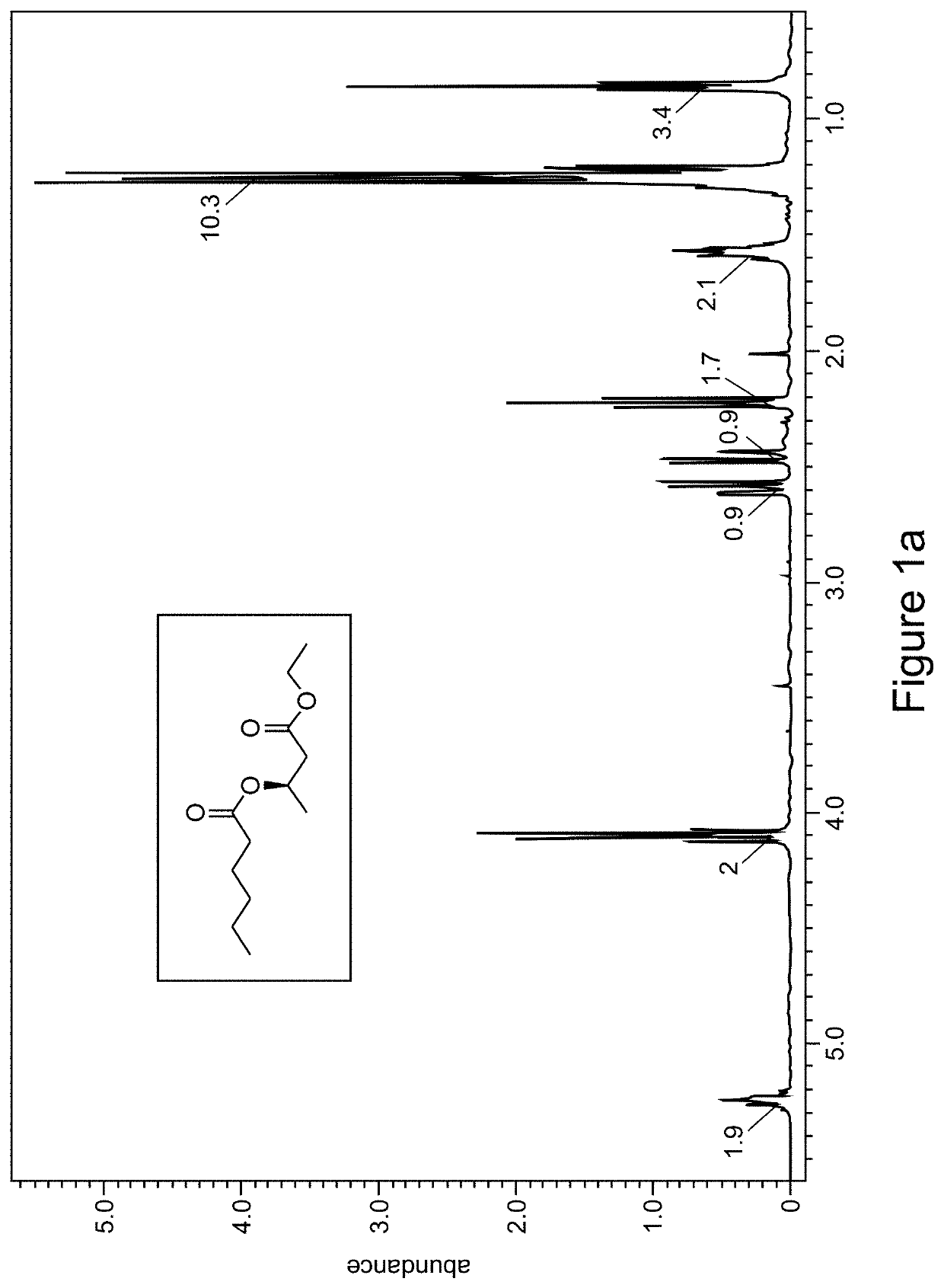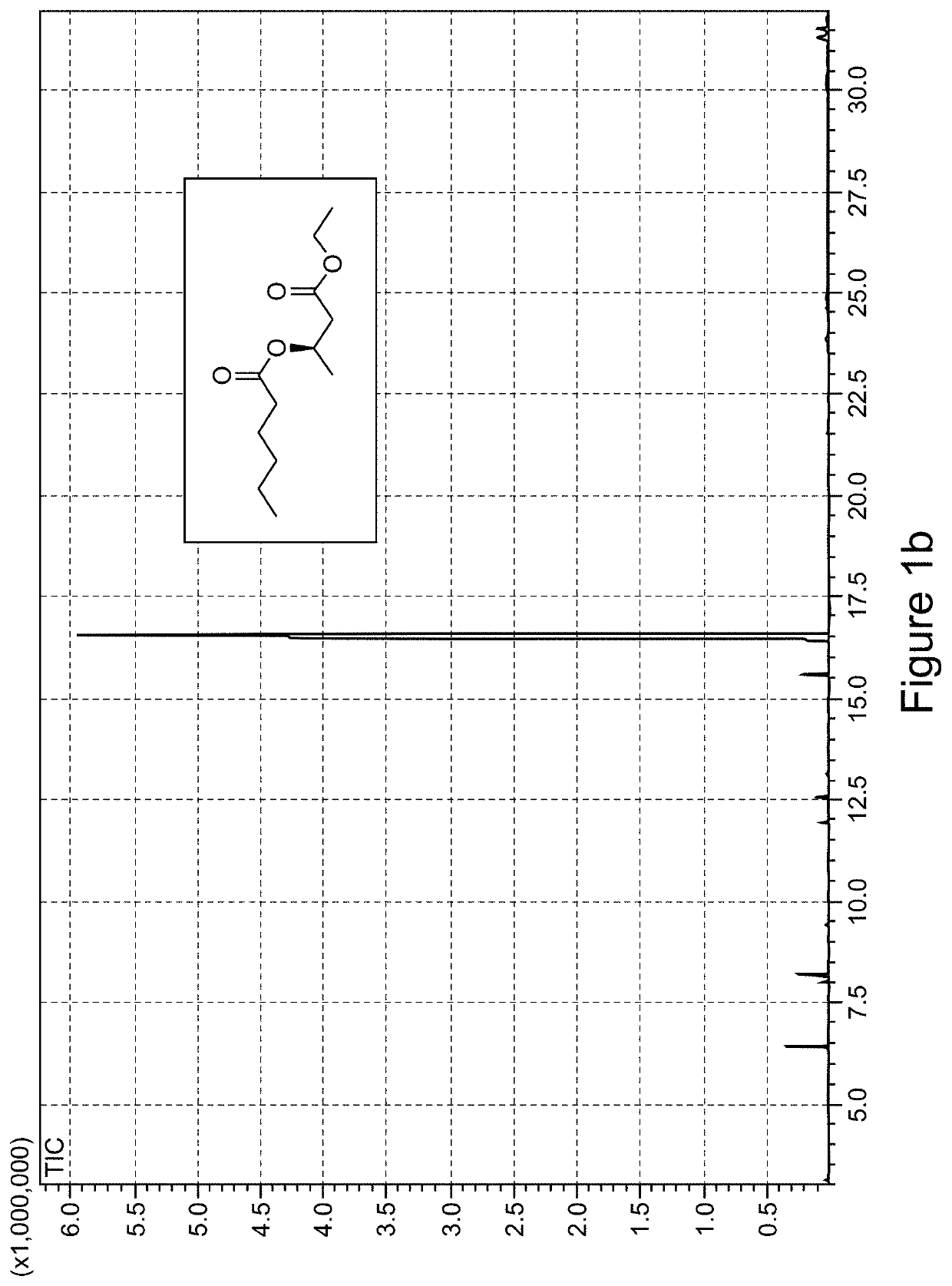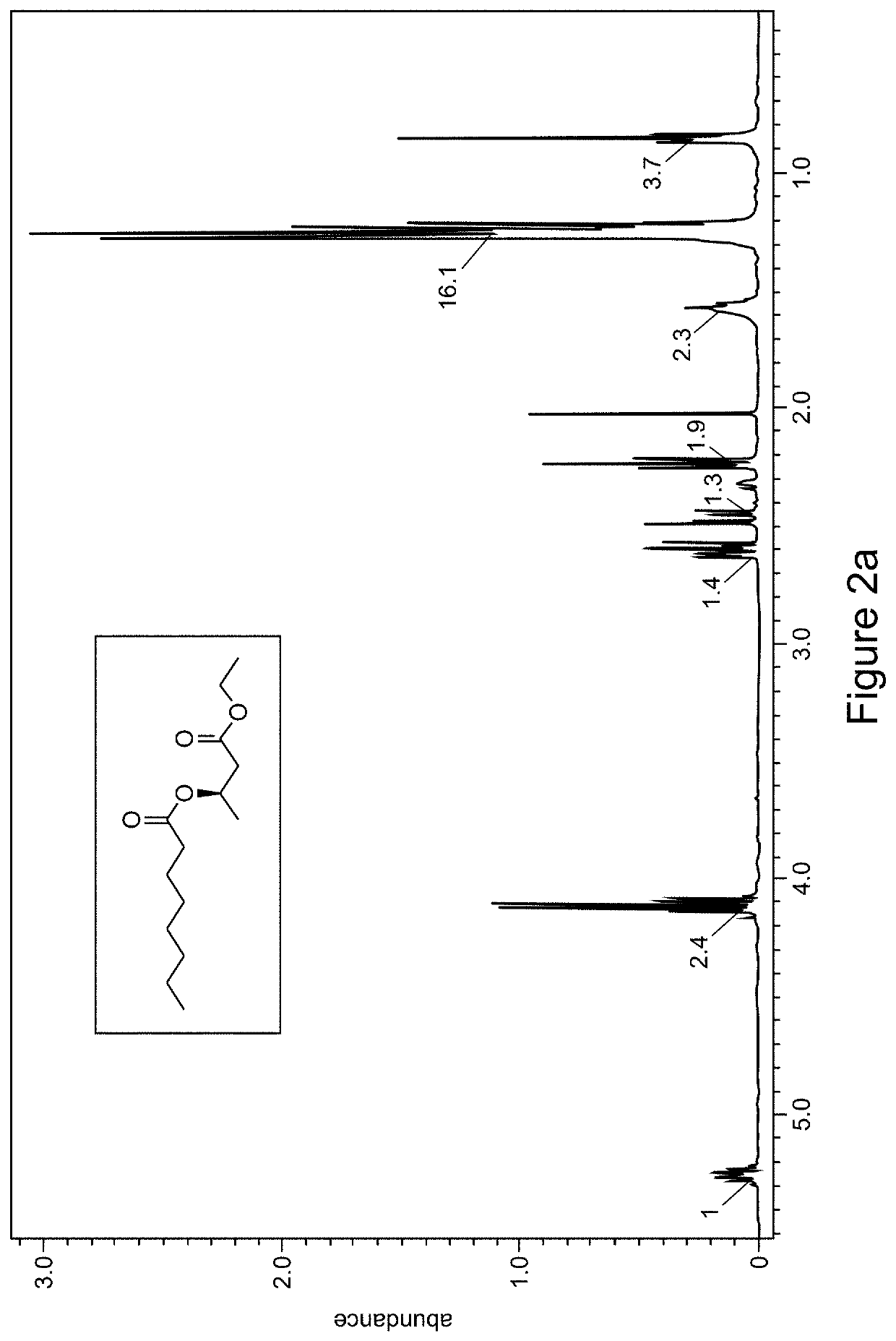Medium chain fatty acid esters of beta-hydroxybutyrate and butanediol and compositions and methods for using same
a technology of fatty acid esters and beta-hydroxybutyrate, which is applied in the field of medium chain fatty acid esters of beta-hydroxybutyrate and butanediol and compositions and methods for using same, can solve problems such as difficult adhesion, gastrointestinal problems, and foods of a ketogenic diet unpalatabl
- Summary
- Abstract
- Description
- Claims
- Application Information
AI Technical Summary
Benefits of technology
Problems solved by technology
Method used
Image
Examples
example 1
of Acyl Substituted Ethyl β-Hydroxybutyrate
[0195]
[0196]As depicted in Scheme 3, one molar equivalent of R-ethyl β-hydroxybutyrate is dissolved in pyridine to a concentration of 0.2 molar. The solution is placed under nitrogen atmosphere and cooled to 0° C. A substituted (e.g., hexyl, FIGS. 1a-1b and octyl, FIGS. 2a-2b) acyl chloride at 2 molar equivalent is added dropwise via syringe to the β-hydroxyester solution while stirring. The reaction mixture is allowed to warm to room temperature and stirred overnight. The reaction was then loaded into a separatory funnel and diluted with 1.5 volumes of ethyl acetate (based on reaction volume) and was then washed 5 times with 0.5 volumes of hydrochloric acid solution (HCl 10%) then 4 times with 0.5 volumes of a saturated aqueous sodium bicarbonate solution and once with brine. The ethyl acetate layer was then dried with magnesium sulfate, filtered and the solvent removed by rotary evaporation. The crude product was analyzed by 1H NMR (FIGS....
example 2
of Acyl Substituted Hexyl β-Hydroxybutyrate
[0197]
[0198]As depicted in Scheme 4, Sodium β-hydroxybutyrate (1 molar equivalent) was suspended in dry dimethylformamide to a concentration of 0.2 molar. 1-bromohexane (0.7 molar equivalents) was added, the reaction vessel was sealed and heated to 60 degrees C. with stirring for 18 hours, during which time the reaction mixture became clear. It was then cooled and loaded into a separatory funnel and diluted with 1.5 volumes of ethyl acetate (based on the reaction volume). It was then washed five times with 0.5 volumes of a saturated aqueous sodium bicarbonate solution and once with brine. The ethyl acetate layer was then dried with magnesium sulfate, filtered, and the solvent removed by rotary evaporation. The crude product was analyzed by 1H NMR and GC-MS. Pure (>95%) product was seen, with the main contaminant being 1-bromohexane, which was removed by further vacuum pumping.
[0199]The hexyl β-hydroxybutyrate product was then dissolved in p...
example 3
of Acyl Substituted R-1,3-Butanediol
[0203]
[0204]As depicted in Scheme 7, R-1,3-butanediol (1 molar equivalent) was dissolved in pyridine to a concentration of 0.2 molar. The solution was placed under a nitrogen atmosphere and cooled at 0 deg C. 3-3.5 molar equivalents of the appropriate acyl chloride (hexyl, FIGS. 4a-4b; octyl, FIGS. 5a-5b) was added dropwise via syringe to the solution with stirring. The reaction mixture was allowed to warm to room temperature and stirred overnight. The reaction mixture was then loaded into a separatory funnel and diluted with 1.5 volumes of ethyl acetate (based on the reaction volume). It was then washed five times with 0.5 volumes of a hydrochloric acid solution (10%), then four times with 0.5 volumes of a saturated aqueous sodium bicarbonate solution and once with brine. The ethyl acetate layer was then dried with magnesium sulfate, filtered, and the solvent removed by rotary evaporation. The crude product was analyzed by 1H NMR (FIGS. 4a and 5a...
PUM
| Property | Measurement | Unit |
|---|---|---|
| w/w | aaaaa | aaaaa |
| w/w | aaaaa | aaaaa |
| time | aaaaa | aaaaa |
Abstract
Description
Claims
Application Information
 Login to View More
Login to View More - R&D
- Intellectual Property
- Life Sciences
- Materials
- Tech Scout
- Unparalleled Data Quality
- Higher Quality Content
- 60% Fewer Hallucinations
Browse by: Latest US Patents, China's latest patents, Technical Efficacy Thesaurus, Application Domain, Technology Topic, Popular Technical Reports.
© 2025 PatSnap. All rights reserved.Legal|Privacy policy|Modern Slavery Act Transparency Statement|Sitemap|About US| Contact US: help@patsnap.com



